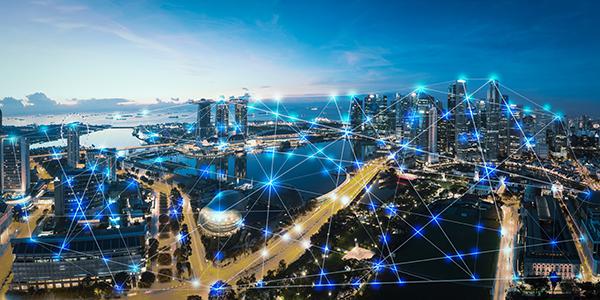A Confluence of Technologies Defines Information Systems
The whole will be greater than the sum of its parts as evolving technologies come together to spawn entirely new capabilities that will affect the connected world. That connected world itself will be expanding as innovations empower people far beyond existing, and even envisioned, parameters
As with all advances, this new connected world will not be without drawbacks. Security and privacy concerns will be greater, as the potential threats become more ubiquitous. But some capabilities may bring their own solutions to these challenges.
This convergence was described in a panel discussion at the STAR-TIDES 14th Annual Capabilities Demonstration. Held this year virtually for the first time, the two-day event explored many of the resilience and connectivity issues confronting the world.
The coming world of 5G was one of the confluence topics discussed heavily. “I call 5G more of an ecosystem of technologies that is carefully orchestrated and data coordinated,” said Jeff Evans, director of the Information and Communications Laboratory at Georgia Tech. He noted that many existing apps are not going away, and they need to be integrated with security, management and analytics.
The combination of the Internet of Things (IoT), 5G and artificial intelligence (AI) is the holy grail for supporting full autonomy, society enhancement and personal support, Evans offered. The extensive features of 5G concepts and the IoT offer billions of new attack vectors. Already, devices such as FitBit that are worn by military personnel are leaking personal information that can be exploited by adversaries seeking information about bases and deployments.
In the future network, many mechanisms for network slices are not yet evolved, standards remain to be developed and security will have to be decentralized. And, zombie devices—legacy hardware that is left behind the security curve —will pose a security threat.
However, these new capabilities also can offer protection. Having AI increases autonomy, leaving few actionable requirements needing decisions. Zero trust designs will help, and edge processing can feed security needs.
Communications, storage and processing are converging at the edge, noted Rear Adm. David Simpson, USN (Ret.), of Virginia Tech. Synchronization will be key, he added, because the next part of the convergence will be the coming together of WiFi 6, WiFi 6E, broadcast TV and radio. They will have LTE characteristics that allow one-to-many communication. Links will connect into the rest of the duplex world, and this widespread connectivity will lead to “an increasingly congested and contested spectrum environment,” he declared.
So the new systems will need to use less power, both for consumption efficiency and to reduce bandwidth interference with other devices. The military will want low probability of intercept and detect, along with geolocation. AI will help bring power levels down, he added.
Ultimately, Adm. Simpson foresees the coming of common radar and radio bandwidths. Radars could have a 5 percent duty time, and their 95 percent quiet time could be used for communication sharing the same band. Efforts are underway to synchronize spectrum usage, he reported.





Comments